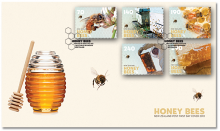Grüne Bohne: Viele Pflanzenschutzmittelrückstände
In den zurückliegenden Untersuchungsjahren wurde bei grünen Bohnen immer wieder ein erhöhter Anteil an Höchstmengenüberschreitungen festgestellt, insbesondere bei Bohnen aus Kenia und Marokko. Daher werden auch in diesem Jahr im Rahmen der amtlichen Lebensmittelüberwachung Bohnen auf Rückstände an Pestiziden untersucht. In unserem Bericht sind die Untersuchungsergebnisse von 2010 bis Juni 2013 zusammengefasst. Am CVUA Stuttgart wurden im Berichtszeitraum (2010 bis Juni 2013) insgesamt 180 Proben grüne Bohnen aus verschiedenen Herkunftsländern auf Rückstände von über 600 Pestiziden untersucht. Bei 127 der 180 (70,5%) Proben wurden Rückstände an Pflanzenschutzmitteln festgestellt, wobei 99 Proben (55%) mehr als einen Wirkstoff pro Probe (Mehrfachrückstände) aufwiesen. Insgesamt 18 Proben stammten aus ökologischer Erzeugung, diese waren praktisch rückstandsfrei. Bezogen auf Bohnen aus konventioneller Erzeugung wurden bei 16% der Proben Höchstmengenüberschreitungen festgestellt (Zum Vergleich: in 2012: 24,5%; in 2011: 5,7%; in 2010: 20%; in 2009: 8%). In drei Fällen wurden Rückstandsgehalte eines einzelnen Wirkstoffes festgestellt, die zu einer Überschreitung der toxikologisch noch akzeptablen Aufnahmemenge, der sogenannten akuten Referenzdosis (ARfD) bezogen auf Kleinkinder, führten. Eine Probe davon wurde als möglicherweise gesundheitsschädlich beurteilt.










